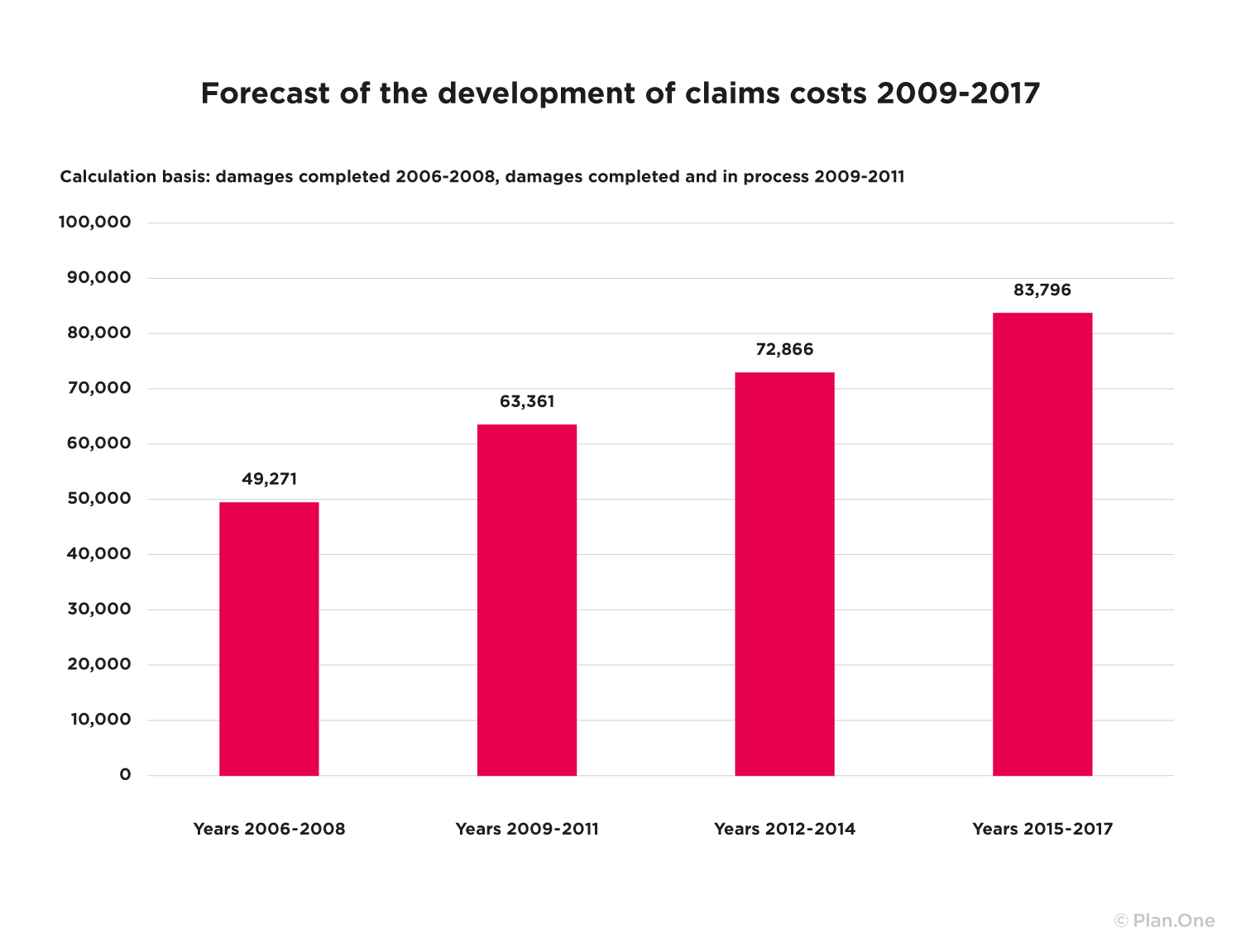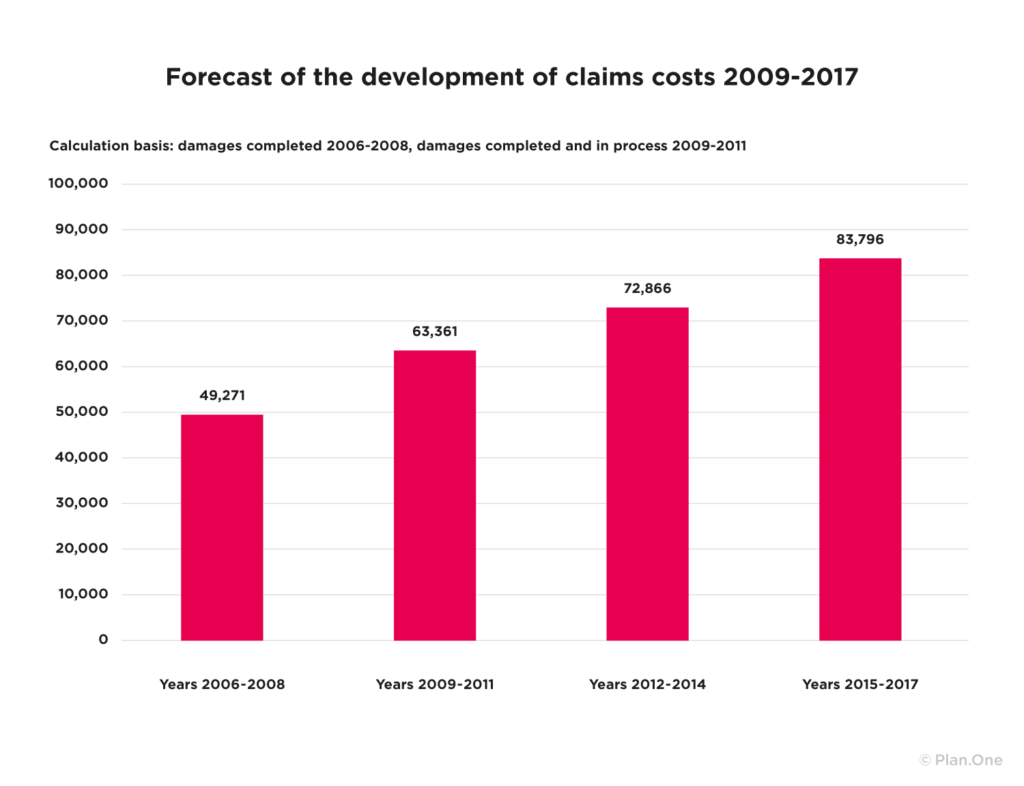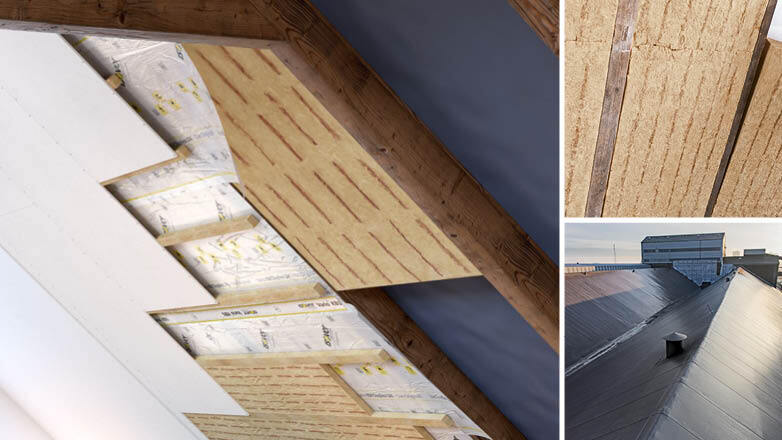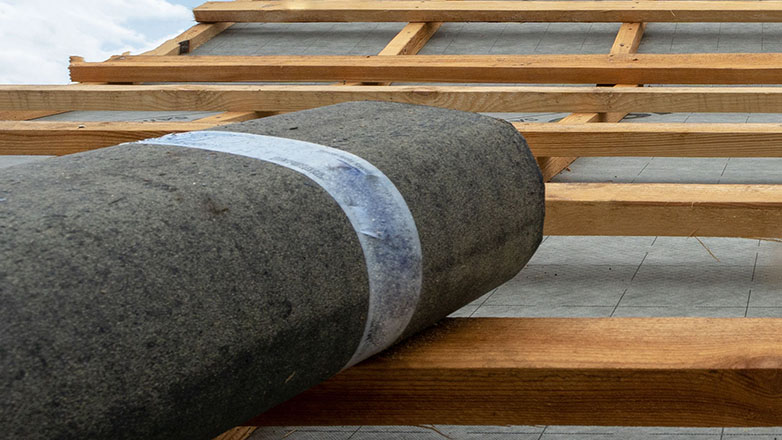How the complexity of product selection affects claims costs
Heike Böhmer is the director of the Institute for Building Research in Hanover. And thus also responsible for the study “Analysis of the development of building damage and building damage costs”. The study analyzes building damage and building damage costs on the basis of relevant insurance damage. Sarah Centgraf spoke for us with Heike Boehmer about the study and how planners can avoid building damage and the resulting damage costs.
Heike Böhmer is the director of the Institute for Building Research in Hanover. And thus also responsible for the study “Analysis of the development of building damage and building damage costs”. The study analyzes building damage and building damage costs on the basis of relevant insurance damage. Sarah Centgraf spoke for us with Heike Boehmer about the study and how planners can avoid building damage and the resulting damage costs.
The development of structural damage allows the assumption that those who build more will make more mistakes. Would you agree with this statement?
One can assume that. But I am of the opinion that this is not necessarily the case. We evaluate building damage figures based on data from an insurance company. So we only look at damages. And if we were to relate this to the entire construction process, that would be presumptuous. Although we analyze a large number, we cannot and do not want to conclude from this that the overall quality of construction in Germany is poor. But if we look in detail, we can already see signs that mass and speed could contribute to the deterioration in construction quality.
One area in which we are seeing increasing numbers of claims is plant engineering, i.e. heating, ventilation and solar technology. The technology here is becoming increasingly complex and requires a great deal of specialist expertise. The fact that many different players are involved in a construction project and the growing shortage of skilled workers are among the reasons for the rising loss figures.
They have determined that the cost of damages has increased. Can you venture a forecast of how this figure will develop in the future?
The tendency of our investigation and our own practical experience suggest that claims costs will continue to rise significantly. Even if we disregard the complexity of the damage itself, they will increase if only because the construction costs increase. The reasons for this are the good capacity utilization of the executing companies and increased material prices. In addition to these costs, which include the removal of defects and damage, the costs of experts and court costs will also increase. And this is not only the case in new buildings. Whenever something has to be done to the building, money has to be taken in hand. This is also the case with renovations. Damage repair is basically nothing more than renovation. If we then take into account that construction is becoming more complex due to the demands and requirements, then it can also be assumed that the costs of damage will increase. Last but not least, the demands on planning and execution due to technical standards and a wide range of products on the market play a role.
Do you think that the BIM planning method can counteract this?
The method alone cannot do this. First of all, BIM is nothing more than a pencil or a computer program with which you create a drawing. The information that is entered must be technically correct. The method will not help if the attributes, properties and characteristics entered are incorrect. What BIM improves is the communication between the parties involved, which is especially important at interfaces between trades and parties involved. With the digital process, architects have the opportunity to optimize planning through to construction and to avoid errors, for example by checking for collisions. Nevertheless, building is a craft and requires a high level of expertise in planning and building. BIM does not, of course, take this away.
Do you derive recommendations for architects and engineers from the study?
We are great advocates of early cooperation. We don’t just call it BIM, but the theory of communication behind it is important to us. Not only, but also through digitalized processes. We recommend bringing together the planners and all those involved in the construction process, together with the client, and discussing all relevant matters concerning the planning and construction process at an early stage. In this way, any collision of ideas, planning details and execution strategies will be noticed early. Thus, no damage, but rather a deficiency is detected early on, ideally even before it arises. This is the strategy we recommend to architects and all those involved in construction and we try to spread the word about it with all possible means. Without communication you will not get quality. And the second thing I continuously propagate is to promote the competence of the personnel involved. This begins with the training of architects and engineers. Even at this stage, cooperation must be encouraged. Because it is of course much easier, better and more efficient to work together.
What kind of damage is particularly noticeable?
The basic issue remains moisture. It has accompanied us for many years and can be found as a result of sealing defects in many building components, e.g. in the area of windows and doors, the roof, but also in areas in contact with the ground, in the basement, the floor slab or even in the interior of bathrooms, behind showers and bathtubs. There are many requirements, but they are not really new. These have been around for several years. Nevertheless, it is an area that has a great potential for damage and can cause serious consequential damage, such as mold infestation. This also affects the damage costs. These vary very strongly. They differ according to size, type and location of the infestation and the further consequences. In the study, deficiencies in building sealing and perimeter insulation as well as in the building envelope (airtight level) were increasingly found. It is not unusual to find damage costs in the 5-digit range here.
How do you explain the frequent damage to the roof?
The roof is a complex component, predominantly not solid, but a lightweight construction, which is manufactured by hand and in which many trades are involved. Accordingly, there are many design interfaces, which naturally represent risk areas. In addition, since it often happens that not all those involved in construction sit around a table from the start and agree on a common solution and the trades work one after the other, misunderstandings can arise in the execution, sometimes even damaging the previous trade.
What connection do you see between the increase in damage to the roof and the products used?
We cannot clearly prove a connection with the study. However, a glance at numerous expert reports shows that the large number of products available on the market, in combination with the requirements for the component, poses a major challenge for planners and contractors. Since only certain system components fit together, it is important to select the right product – approved for the respective application – and to install it professionally.
Can product comparison platforms such as Plan.One help you to find your way around the product market better?
The fact that the decision maker is solely responsible for the correctness of the data, products, design details and instructions used remains difficult, which continues to require the aforementioned competence of the decision makers. Training and further education therefore remain unchanged requirements for construction quality. Product comparison platforms can nevertheless support those involved in construction in their decision, provided that they contain all relevant criteria and current information that is technically and legally necessary for the decision. Therefore, such a platform must be continuously maintained by persons with high professional competence in order to maintain its value.
Sarah Centgraf
Architect and editor with a focus on digital product innovations that contribute to sustainability.








